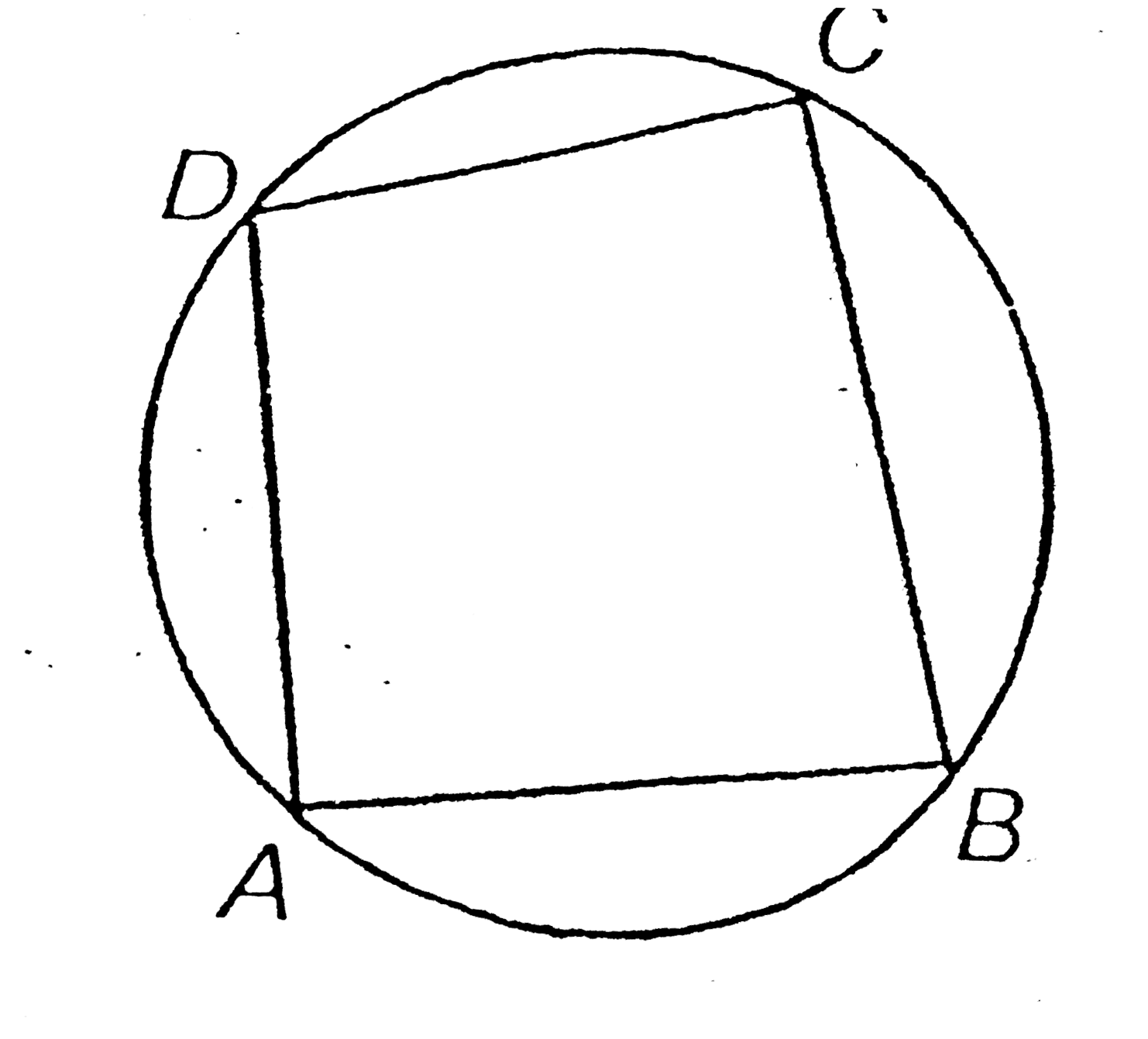The postion vectors of the vertrices fo aquadrilateral with A as origian are B(→b),D(→d)andC(l→b+m→d) . Prove that the area of the quadrilateral is 12(l+m)∣∣→b×→d∣∣.
Area of quandrilateral is 12∣∣∣−−→AC×−−→BD∣∣∣=12∣∣(l→b+m→d)×(→d−→b)∣∣
=12∣∣l→b×→d−m→d×→b∣∣
=12(l+m)∣∣→b×→d∣∣
Topper's Solved these Questions
- BOOK - CENGAGECHAPTER - DIFFERENT PRODUCTS OF VECTORS AND THEIR GEOMETRICAL APPLICATIONS EXERCISE - Exercise337videos
DIFFERENT PRODUCTS OF VECTORS AND THEIR GEOMETRICAL APPLICATIONS
- BOOK - CENGAGECHAPTER - DETERMINANTSEXERCISE - Question Bank23videos
DETERMINANTS
- BOOK - CENGAGECHAPTER - DIFFERENTIAL EQUATIONSEXERCISE - Question Bank25videos
DIFFERENTIAL EQUATIONS
Similar Questions
If →a,→b,→cand→d are the position vectors of the vertices of a cycle quadrilateral ABCD, prove that ∣∣→a×→b+→b×→d+→d×→a∣∣(→b−→a).(→d−→a)+∣∣→b×→c+→c×→d+→d+→d×→b∣∣(→b−→c).(→d−→c)
View SolutionIf →a,→b,→cand→d are the position vectors of the vertices of a cycle quadrilateral ABCD, prove that ∣∣→a×→b+→b×→d+→d×→a∣∣(→b−→a).(→d−→a)+∣∣→b×→c+→c×→d+→d+→d×→b∣∣(→b−→c).(→d−→c)
View Solution
Knowledge Check
- Question 1 - Select One
The position vectors of the vertices A, B and C of a triangle are three unit vectors →a,→band→c respectively. A vector →d is such that →d.ˆa=→d.ˆb=→d.ˆcand→d=λ(ˆb+ˆc) . Then triangle ABC is
Aacute angledBobtuse angledCright angledDnone of these - Question 2 - Select One
Given →C=→A×→Band→D=→B×→A. What is the angle between →C and →D ?
A30∘B60∘C90∘D180∘ - Question 3 - Select One
If →A×→B=→C+→D, them select the correct alternative:
A→B is parallel to →C+→DB→A is perpendicular to →CCComponent of →C along →A = Components of →D along →ADComponent of →C along →A =-Components of →D along →A
If →a,→b,→c,→d are the position vectors of the verticles of a cyclic quadrilateral ABCd prove that
∣∣→a×→b+→b×→d+→d×→a∣∣(→b−→a).(→d−→a)+∣∣→b×→c+→c×→d+→d×→b∣∣(→b−→c).(→d−→c)=0
 View Solution
View SolutionGiven a+b+cd+c=0 , which of the following statements are correct?
(a) →a,→b,→cand→d must each be a null vector .
(b) The magnitude of (→a+→c) equals the magnitude of (b+d)
(c) The magnitude of →a can never be greater than the sum of the magnitudes of →b,→cand→c.
(d) →b+→c must lie in the plane of →aand→d if →aand→d are not collinear ,and in the line of →aand→d, if they are collinear.View SolutionIf →b and →c be the intersecting face-diagonals of a cube of edge a in the planes XOY and YOZ respectively with respect to a frame of reference erected at the point of intersection of the vectors and edges of the cube as the axes, find (a) the components of the vector →d, where →d=→b×→c and (b) the values of →b.→c and →d.→c.
View SolutionLet →a,→b and →c be three mutually perpendicular unit vectors. If →d is a linear combination of →a,→b and →c such that →d makes equal acute angles with all three vectors →a,→b and →c and ∣∣→d∣∣=2, then the value of ∣∣→a+→b,→c+→d∣∣ is
View SolutionIf (→a×v→b)×(→c×→d).(→a×→d)=0 then which of the following may be true ?
View Solution

